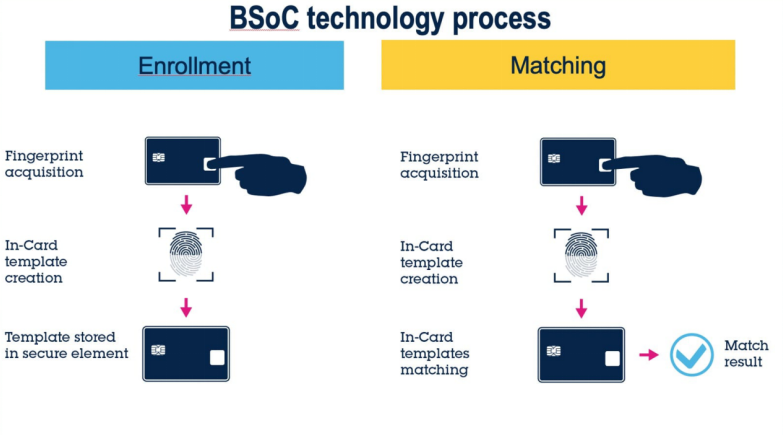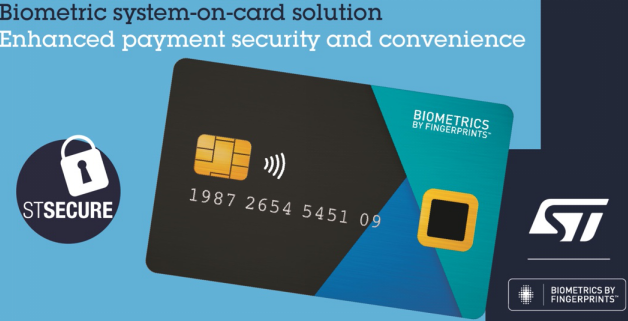According to a study by ReportLinker, the global contactless biometric authentication technology market will reach $18.6 billion by 2026. The study also pointed out that the recent outbreak will promote the application of related technologies. Consumers are beginning to look for payment methods that can maintain social distance and also hope to reduce interaction with hardware surfaces that may be contaminated.
Therefore, secure payments through contactless cards and using biometric authentication technology are becoming increasingly popular, and the adoption of biometric authentication system solutions will help increase or even eliminate the existing contactless payment amount limits.
Unfortunately, even as biometric authentication becomes mainstream, accurate information is still hard to come by. In addition, the core technology behind biometric payment cards is also being introduced into other forms of authentication, such as employee ID cards or national ID cards. Therefore, both opinion leaders and decision makers must understand the technical challenges faced by these emerging technologies.
The hardware architecture is relatively straightforward, consisting of a fingerprint sensor, a general-purpose microcontroller to acquire the image captured by the sensor, and a secure element. The MCU stores the fingerprint image after login and compares it before conducting transactions in a secure environment. However, biometric authentication systems must overcome several challenges to be successful.
Efficiency Challenge
Hardware Requirements

How the Biometric Identity Authentication System Works
Adding biometric authentication to a card is a challenging task because manufacturers must meet established card thickness requirements to ensure that the card can be recognized by existing card readers when swiped or inserted. The ISO/IEC 7810 standard stipulates that all financial and ID cards must be 0.76 mm thick. Other standards define how much the card can bend without damaging the connector or components. However, as long as these stringent conditions are met, it means that biometric financial card manufacturers can easily migrate their solutions. Products such as biometric ID cards and employee ID cards with fingerprint recognition will become easier to manufacture.
Engineers also had to address the technical challenges of power consumption and power supply for such cards. Therefore, STMicroelectronics used a secure element that can obtain power from the contactless card reader and distribute it to the entire card. The reason why this system is successful is that the power consumption of general-purpose microcontrollers (STM32) and ST31 is low enough that only the power obtained during the magnetic coupling process is enough to operate. The innovation of the biometric authentication system is that it uses the same NFC technology as the previous generation of contactless financial cards, but can power more components such as fingerprint sensors and general-purpose microcontrollers.
Storage and computing throughput
Capturing the user's fingerprint and storing the associated template after logging in requires more storage space. Therefore, engineers responsible for biometric authentication systems need more powerful hardware performance. The security element is responsible for executing the application, protecting the security of information such as the biometric template, and executing the algorithm to match the fingerprint to the template to authorize the user. As a result, more storage space is required for the template and the matching algorithm. Similarly, general-purpose microcontrollers capture fingerprints from sensors and then transmit the results to the security element, which requires high computing power and low power consumption. Including fingerprint matching, the entire transaction time must be less than one second. Therefore, the platform must provide maximum optimization to ensure a perfect user experience.
Security and user experience challenges
Easy to use
One of the challenges users face is the lack of standardization in the login process, which requires a trade-off between overall security, performance, and ease of use. Companies are beginning to explore different login mechanisms, using card holders, mobile devices, or card readers with optional LEDs on the cards and login support. The capture speed must also be fast enough to meet the requirements of biometric standards such as false acceptance rate (FAR) and false rejection rate (FRR) that regulate biometric interactions. False acceptances can create major security vulnerabilities and make the entire system untrustworthy. On the other hand, false rejections can also result in an unacceptable experience for end users. Therefore, teams developing related systems must find a balance between accuracy and performance.
safety
Biometric authentication systems are different from existing solutions. They can provide better biometric processing functions and provide more protection for sensor images, templates, etc. Therefore, systems such as biometric cards are much more secure than PIN code authorization or basic contactless solutions, and can provide more robust security and privacy protection. However, as described in this article, there are still many challenges in the design of biometric authentication systems.

ST and Fingerprint Cards collaborate to develop advanced biometric system-on-card solutions (BSoC) based on fingerprint recognition technology
In July 2020, STMicroelectronics and Fingerprint Cards AB (Fingerprints), a world-leading biometric technology company, collaborated to develop an advanced biometric card system-on-card solution (BSoC) based on fingerprint recognition technology to meet market requirements for improved security and convenience of contactless payment cards. BSoC integrates STMicroelectronics' latest generation of secure payment technology based on ST31/STPay chipsets and STM32 general-purpose microcontrollers with Fingerprints' next-generation T-shaped sensor modules to provide a complete battery-free secure payment solution for the banking market.
Contactless payment cards are the primary target application for this joint development agreement, and the two parties are also interested in exploring other markets such as identity cards, health cards, access cards and transportation cards.
By using the solutions of STMicroelectronics and Fingerprint Cards, the above complex issues can be avoided, while speeding up the processing, ensuring the security of the biometric authentication system and providing end users with a perfect user experience.
Previous article:Sensor Node Controller - Powering Future Connected Sensors
Next article:Empowering mid-to-high-end 4K smart security applications, the 8MP image sensor SC830AI is newly released
- Popular Resources
- Popular amplifiers
- Mir T527 series core board, high-performance vehicle video surveillance, departmental standard all-in-one solution
- Akamai Expands Control Over Media Platforms with New Video Workflow Capabilities
- Tsinghua Unigroup launches the world's first open architecture security chip E450R, which has obtained the National Security Level 2 Certification
- Pickering exhibits a variety of modular signal switches and simulation solutions at the Defense Electronics Show
- Parker Hannifin Launches Service Master COMPACT Measuring Device for Field Monitoring and Diagnostics
- Connection and distance: A new trend in security cameras - Wi-Fi HaLow brings longer transmission distance and lower power consumption
- Smartway made a strong appearance at the 2023 CPSE Expo with a number of blockbuster products
- Dual-wheel drive, Intellifusion launches 12TOPS edge vision SoC
- Toyota receives Japanese administrative guidance due to information leakage case involving 2.41 million pieces of user data
- LED chemical incompatibility test to see which chemicals LEDs can be used with
- Application of ARM9 hardware coprocessor on WinCE embedded motherboard
- What are the key points for selecting rotor flowmeter?
- LM317 high power charger circuit
- A brief analysis of Embest's application and development of embedded medical devices
- Single-phase RC protection circuit
- stm32 PVD programmable voltage monitor
- Introduction and measurement of edge trigger and level trigger of 51 single chip microcomputer
- Improved design of Linux system software shell protection technology
- What to do if the ABB robot protection device stops
- CGD and Qorvo to jointly revolutionize motor control solutions
- CGD and Qorvo to jointly revolutionize motor control solutions
- Keysight Technologies FieldFox handheld analyzer with VDI spread spectrum module to achieve millimeter wave analysis function
- Infineon's PASCO2V15 XENSIV PAS CO2 5V Sensor Now Available at Mouser for Accurate CO2 Level Measurement
- Advanced gameplay, Harting takes your PCB board connection to a new level!
- Advanced gameplay, Harting takes your PCB board connection to a new level!
- A new chapter in Great Wall Motors R&D: solid-state battery technology leads the future
- Naxin Micro provides full-scenario GaN driver IC solutions
- Interpreting Huawei’s new solid-state battery patent, will it challenge CATL in 2030?
- Are pure electric/plug-in hybrid vehicles going crazy? A Chinese company has launched the world's first -40℃ dischargeable hybrid battery that is not afraid of cold
- Application of high-torque micro-displacement platform based on piezoelectric stack in performance testing of power amplifier
- [Fudan Micro FM33LG0 Series Development Board Review] CAN Test 2
- Repair a weird HC-SR04
- UF2 bootloader for ESP32-S2
- Request a free ZVS buck-boost evaluation board!
- bq30z50/55 senc file export configuration process
- Three-cell lithium battery charging management IC-VAS5176 charging current test
- USB TYPE C interface problem urgent help
- Notice on the extension of ON Semiconductor and Avnet IoT Innovation Design Competition
- Can't find header file when compiling

 UPC393G2(5)-E1
UPC393G2(5)-E1












 京公网安备 11010802033920号
京公网安备 11010802033920号